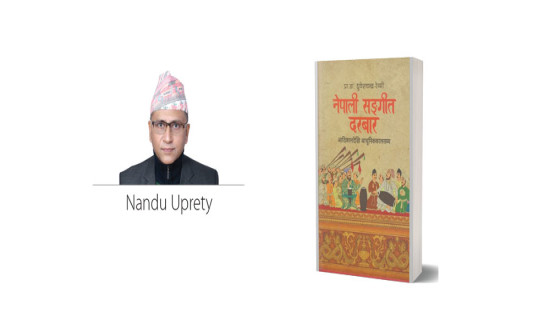- Friday, 26 April 2024
Pathways To End Tuberculosis Epidemic
World Tuberculosis (TB) Day was commemorated on March 24 to raise public awareness of the devastating health, social and economic consequences of TB, and scale up of existing cost-effective interventions to end the global TB epidemic. Interestingly, the date marks the day in 1882 when Dr. Robert Koch announced that he had discovered the bacterium that causes TB.
Sadly, TB burden is still alarming as it is one of the leading causes of death worldwide. According to Global TB Report - 2022, an estimated 10.6 million fell ill with TB worldwide, of which 6 million were men, 3.4 million were women, and 1.2 million were children. More importantly, people living with HIV accounted for 6.7 per cent of the total. Unfortunately, TB is a major killer of people living with HIV and a major cause of deaths related to antimicrobial resistance.
Interesting history
Like other South Asian countries, Nepal has an interesting history in terms of efforts in TB prevention, diagnosis and treatment. The first initiative of controlling TB disease started in 1937 by establishing a sanitarium at Tokha which primarily aimed at caring TB patients. In 1951, a chest clinic was established in Kathmandu for the first time to begin the formal treatment of TB patients. Likewise, a national TB programme was developed in 1965 to further strengthen the TB prevention, diagnosis, referral and treatment services.
Later, after a strategic merging of the clinic and TB programme in 1989, National TB Control Centre (NTCC) was formally established as an apex national entity under the Ministry of Health to manage TB programme in the country. Moving forward, a Directly Observed Therapy Short course (DOTS) strategy started in 1996. Furthermore, adoption of ‘Stop TB Strategy’ in 2006 and ‘End of TB Strategy’ in 2015 have been a major landmark in terms of alignment with global and national commitments to end the TB epidemic at large.
In Nepal’s context, the NTCC has been taking lead in formulating strategic plans since 1994/95. More recently, a national strategic plan (2021/22-2025/26) is developed through participatory and inclusive consultations with a range of key stakeholders that broadly articulates strategic priorities for interventions in the federal context. One of the important strategic objectives is to improve the quality of TB services and strengthen the health system for universal access to TB services through effective engagement of health workers and communities. However, TB burden is still very high in the country. According to National TB Prevalence Survey (2017/18), TB prevalence rate is 416 per 100, 000 which is 1.6 times higher than previously estimated.
Notification rate of new TB cases differ substantially by geographic areas. Available evidence suggests that notification rates are found to be higher in Terai as compared to mountain area. As a ground reality, COVID-19 pandemic had a damaging impact on access to TB diagnosis, treatment and care. During the health emergencies, there is a critical challenge to ensure equitable access to TB prevention, diagnosis and treatment. Notably, people with TB are unfortunately among the most marginalised and vulnerable, and hence the health inequities for people with TB and other infectious diseases will further widen during the pandemics or other natural disasters.
Despite some progress, there are still challenges to improve meaningful engagement of civil society and private sectors in mobilising resources in TB diagnosis and treatment. Other issues include expansion and optimum utilisation of sputum collection and transportation method to ensure timely diagnosis, referral and treatment. Among many others, a national campaign which aims to achieve the ambitious mission of TB free Nepal is recently implemented at local level. In order to make the campaign more effective, it is necessary to facilitate multi-sector coordination and collaboration for advocacy and resource mobilisation in TB prevention, timely diagnosis and treatment at local level.
Undoubtedly, ambitious goal of ending the TB epidemic would only be possible through high level leadership, increased investments, adoption of innovations and multi-sectoral collaboration. In particular, opportunities to harness the visibility, political commitments and domestic investments are critical pathways to achieve the global targets which were agreed at UN high level meeting on TB in 2018. In low- and middle-income countries, experiences suggest that progress towards universal health coverage, better levels of social protection, and multi-sector actions on broader TB determinants are crucial to reduce the burden of TB disease. On the other side, recently available evidence shows that 48 per cent of people with TB and their households face catastrophic costs.
Donor funding
Still, financing for TB is critical to mobilise resources more efficiently for TB prevention, diagnosis, and treatment. Obviously, a major source of international donor funding comes from Global Fund to fight HIV, TB and Malaria. Additionally, partners such as Global Fund, WHO, Stop TB Partnership, Damien Foundation and a few others are consistently providing technical assistance to national governments in developing and implementing policies, strategies, standards and technical guidelines.
Moreover, technical support from the partners is vital to measure progress towards TB targets and assess overall performance of national TB programme and its likely impact on individuals, families and communities. Enhancing social and political commitment is crucial to accelerate progress as millions still suffer from this ancient, yet preventable and curable disease. Confronting inequalities should be a high priority public health agenda to ensure comprehensive and universal care for those who are affected by TB.
(PhD in global health, Bhandari writes on health and development issues.)








-original-thumb.jpg)







